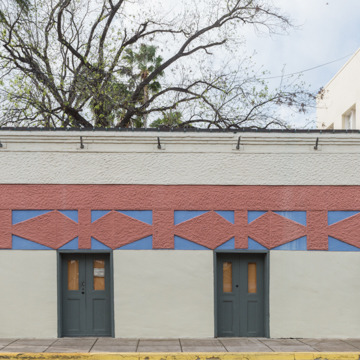You are here
Republic of the Rio Grande Museum (Bártolo García House)
This structure has served as a government building, and residence, and now as a museum. The rear wing of the L-shaped sandstone and plaster building is the earliest component, which may date to the late eighteenth century. In 1840, the building was the capitol for the short-lived Republic of the Rio Grande, a rebel federalist movement in northern Mexico headquartered in Laredo that sought independence from the centralist government of President Antonio López de Santa Anna. For 283 days, the republic survived until defeated by the Mexican president on the battlefield. The segment of the building fronting the plaza was constructed in 1861 as a residence for Bártolo García. In 1955, the entire property was rehabilitated as a local history museum, a seminal preservation effort on the border. The colorful, diamond-patterned decorative plaster dating to the 1920s was restored in 1994.
Writing Credits
If SAH Archipedia has been useful to you, please consider supporting it.
SAH Archipedia tells the story of the United States through its buildings, landscapes, and cities. This freely available resource empowers the public with authoritative knowledge that deepens their understanding and appreciation of the built environment. But the Society of Architectural Historians, which created SAH Archipedia with University of Virginia Press, needs your support to maintain the high-caliber research, writing, photography, cartography, editing, design, and programming that make SAH Archipedia a trusted online resource available to all who value the history of place, heritage tourism, and learning.


